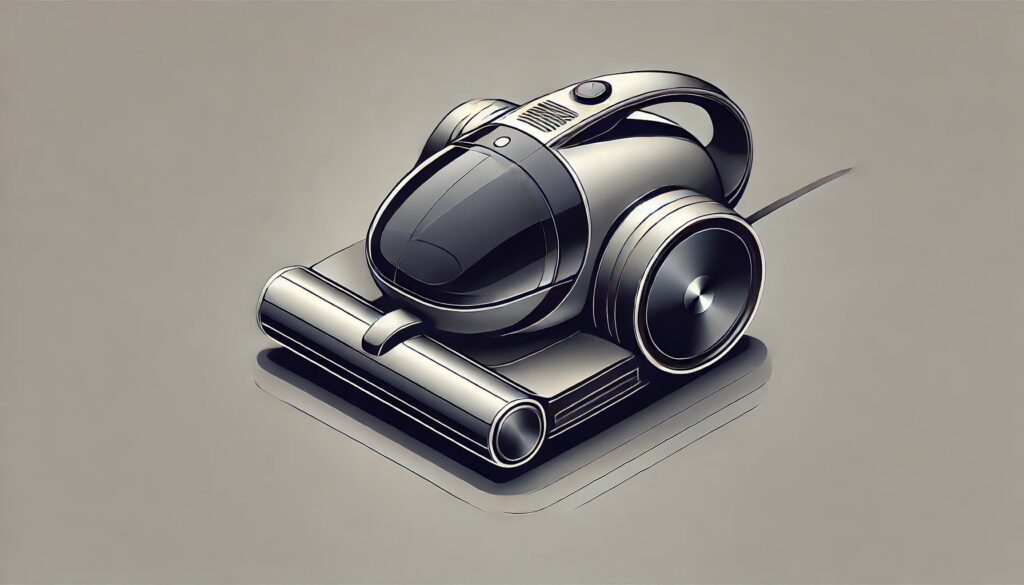
Imagine a world where your loved ones can remain comfortably in their homes as they age, with a trusty robotic companion handling all the day-to-day maintenance. No more worrying about broken appliances, overgrown gardens, or safety hazards. This is no longer the stuff of science fiction; handyman robots are stepping into the spotlight, offering unprecedented support for independent living.
A New Kind of Care: Why Handyman Robots Matter
As the global population ages, more and more people want to stay in their homes rather than move to assisted living facilities. This desire, often referred to as “aging in place,” comes with its own set of challenges. Maintaining a home—whether it’s fixing a leaky faucet or clearing a blocked gutter—can become increasingly difficult as people age. That’s where handyman robots come in, bridging the gap between independence and the need for help.
These robots are designed to perform a variety of household maintenance tasks. From the basic, like changing light bulbs, to more complex jobs, such as repairing appliances, they offer solutions that allow the elderly to live independently for longer.
1. Routine Maintenance
Handyman robots excel at performing regular checks to keep your home running smoothly.
- Door and Window Inspections: They can ensure that doors and windows are properly sealed to prevent drafts and energy loss.
- Leak Detection: Equipped with sensors, these robots can identify water leaks early, helping prevent costly water damage.
- Smoke Detector Checks: They can test smoke detectors and replace batteries as needed, ensuring this critical safety feature is always functional.
2. Repairs and Fixes
While these robots aren’t yet capable of handling complex repairs, they are proficient in a variety of minor fixes that can make a big difference.
- Tightening Screws: Loose cabinet doors or wobbly chairs? Handyman robots can handle that by tightening screws and bolts around the house.
- Unclogging Sinks: With the right attachments, some handyman robots can tackle minor plumbing issues, like unclogging a sink or drain.
- Replacing Light Bulbs: Reaching high ceilings or difficult-to-access fixtures is no longer a problem, as these robots can replace burnt-out bulbs with ease.
3. Yard Work
Handyman robots aren’t confined to the indoors—they can also help keep the exterior of your home in tip-top shape.
- Lawn Mowing: Some handyman robots are equipped to mow the lawn, ensuring your grass stays neat and trimmed without the need for manual labor.
- Leaf Raking: They can rake leaves and gather debris, keeping your yard clean and tidy as the seasons change.
- Snow Removal: During the winter months, these robots can clear snow from walkways and driveways, reducing the risk of slips and falls.
4. Advanced Maintenance and Monitoring
As technology continues to advance, handyman robots are becoming more adept at complex tasks.
- HVAC System Monitoring: Some robots can monitor your home’s heating and cooling systems, alerting you to potential issues before they escalate.
- Structural Inspections: Equipped with cameras and sensors, these robots can inspect for signs of structural damage, such as cracks in the foundation or walls, helping you catch problems early.
- Energy Efficiency Audits: Certain handyman robots can analyze your home’s energy use and suggest improvements, such as adding insulation or sealing gaps, to enhance energy efficiency.

The Benefits of Handyman Robots
Handyman robots are more than just convenient gadgets; they are vital tools that can enhance the quality of life for the elderly.
1. Increased Independence
Perhaps the most significant benefit is the autonomy they offer. By taking care of household maintenance, these robots allow older adults to maintain control over their lives without constantly relying on others.
2. Enhanced Safety
Homes can become hazardous if not properly maintained. A blocked gutter could lead to water damage, and a loose railing could cause a fall. Handyman robots can prevent such issues before they become serious problems.
3. Emotional Comfort
Knowing that there’s a system in place to handle household tasks can provide peace of mind. It reduces the stress that comes with aging, allowing individuals to enjoy their golden years in the comfort of their own homes.
Handyman Robots: A Game-Changer for People with Disabilities?
For individuals with disabilities, maintaining a home can be a significant challenge. Everyday tasks that require physical strength, fine motor skills, or mobility can become daunting or even impossible without assistance. This is where handyman robots come into play, providing a level of independence that was previously hard to achieve.
These robots are designed to take on a variety of household tasks, from routine maintenance to minor repairs and even outdoor chores. For someone with limited mobility or strength, a handyman robot can be the difference between relying on constant external help and being able to manage on their own.
How Handyman Robots Help
The benefits of handyman robots for people with disabilities are numerous. These robots offer practical solutions that make a real difference in day-to-day life.
1. Overcoming Physical Barriers
For someone who uses a wheelchair or has limited mobility, reaching high places or performing tasks that require standing or bending can be difficult or impossible. Handyman robots can:
- Change Light Bulbs: They can easily replace light bulbs in ceiling fixtures, removing the need for ladders or reaching tools.
- Fix Loose Items: Tasks like tightening screws, fixing cabinet doors, or securing a loose railing can be handled by these robots, eliminating the need for physical exertion.
2. Reducing the Need for External Help
Relying on others for household maintenance can be frustrating and can feel like a loss of independence. Handyman robots can reduce or even eliminate the need for external assistance with:
- Routine Checks: These robots can perform regular inspections around the home, checking for leaks, testing smoke detectors, and ensuring everything is in working order.
- Minor Repairs: Instead of waiting for someone to come over and fix small issues, a handyman robot can handle these tasks immediately.
3. Enhancing Safety
For individuals with disabilities, home safety is a top priority. Handyman robots contribute to a safer living environment by:
- Clearing Hazards: Robots can remove potential hazards like snow from walkways, leaves from yards, or clutter from living spaces.
- Monitoring Systems: They can monitor home systems such as HVAC or security, ensuring everything is running smoothly and alerting the homeowner to any issues.
4. Supporting Outdoor Maintenance
Keeping the exterior of a home maintained can be just as challenging as interior tasks, especially for those with physical limitations. Handyman robots can assist with:
- Lawn Care: Robots can mow the lawn, keeping the yard tidy without any physical strain.
- Snow Removal: During winter, they can clear snow from paths and driveways, reducing the risk of falls.
- Garden Maintenance: Some advanced models can even handle basic gardening tasks like watering plants or raking leaves.
A Transformative Impact
The impact of handyman robots on the lives of people with disabilities cannot be overstated. By taking over the physical demands of home maintenance, these robots provide a level of freedom and autonomy that was once out of reach for many.
Emotional Well-being is another area where handyman robots can make a significant difference. The ability to manage one’s own home, without constantly relying on others, can lead to increased self-esteem and a greater sense of control over one’s life.
The Economics of Owning a Handyman Robot: Are They Worth the Investment?”
The first consideration when evaluating the economics of owning a handyman robot is the initial purchase cost. Currently, handyman robots can range from a few thousand dollars to tens of thousands, depending on their capabilities. For example:
- Basic Models: These may cost between $3,000 and $5,000 and are capable of handling simple tasks like mowing the lawn, changing light bulbs, or tightening screws.
- Advanced Models: Robots with more sophisticated features—like plumbing capabilities, complex repairs, or AI-driven maintenance monitoring—can cost anywhere from $10,000 to $20,000 or more.
While this initial investment is significant, it’s essential to consider it in the context of long-term benefits.
Long-Term Savings: Offsetting the Cost
One of the main arguments for investing in a handyman robot is the potential long-term savings on home maintenance and repair costs. Here’s how:
1. Reduced Need for Professional Services
Hiring professionals for home repairs and maintenance can add up quickly. According to various estimates:
- Electricians charge between $50 and $100 per hour, depending on the complexity of the job.
- Plumbers may charge $70 to $150 per hour.
- General Handymen typically charge around $60 to $90 per hour.
For homeowners, these costs can escalate into thousands of dollars annually, especially if the home requires frequent upkeep. A handyman robot, by handling many of these routine tasks, can significantly reduce the reliance on professional services. Over time, the savings could offset the initial cost of the robot.
2. Preventative Maintenance
Handyman robots are not just reactive; they can be proactive. By performing regular checks and maintenance tasks, they can identify and fix small issues before they turn into expensive problems. For example:
- Early Leak Detection: A small leak that goes unnoticed can lead to water damage, potentially costing thousands in repairs. A robot that detects and fixes leaks early can prevent this.
- Routine Inspections: Regularly checking systems like HVAC or electrical outlets can prevent breakdowns, saving on costly emergency repairs.
These preventative measures can lead to substantial savings over time, further enhancing the robot’s cost-effectiveness.
3. Energy Efficiency
Some handyman robots are equipped with features that help optimize your home’s energy efficiency. For example:
- Insulation Checks: Identifying areas where insulation is weak can help reduce heating and cooling costs.
- Smart Thermostat Integration: Some robots can integrate with smart home systems to optimize energy usage.
The potential savings on energy bills can also contribute to offsetting the robot’s initial investment.
Ongoing Maintenance Costs: Keeping the Robot Running
While handyman robots can save money in the long run, they are not without their own maintenance needs. The cost of maintaining a handyman robot depends on several factors:
- Software Updates: Regular updates may be necessary to keep the robot functioning optimally, though these are often included in the purchase price.
- Physical Repairs: Just like any other machine, robots can experience wear and tear. Costs for parts and labor can vary, but most manufacturers offer service plans that range from $200 to $500 annually.
- Battery Replacement: If the robot is battery-operated, the battery may need to be replaced every few years, costing anywhere from $100 to $500 depending on the model.
These ongoing costs, while important to consider, are generally much lower than the savings generated by the robot’s work over time.
Comparing to Traditional Professional Services
To fully evaluate the cost-effectiveness of a handyman robot, it’s useful to compare the total costs over a typical lifespan (say 10 years) to the costs of traditional professional services:
- Cost of Handyman Robot Over 10 Years:
- Initial Investment: $10,000 (for a mid-range model)
- Maintenance Costs: $3,000 (assuming $300/year for updates and repairs)
- Total: $13,000
- Cost of Professional Services Over 10 Years:
- Annual Repairs and Maintenance: $1,500 (a conservative estimate for minor home repairs and maintenance)
- Total: $15,000
Based on this comparison, the handyman robot could potentially save $2,000 over 10 years, not to mention the additional benefits of convenience, peace of mind, and enhanced independence.
The Verdict: Is It Worth It?
So, are handyman robots worth the investment? The answer depends on your specific situation. If you’re someone who frequently needs repairs, struggles with home maintenance, or values the independence that a robot can offer, the investment could be highly cost-effective. For those who require frequent professional services, the savings on labor alone might justify the initial outlay within a few years.
Additionally, as technology advances and the price of handyman robots continues to decrease, their value proposition will likely improve, making them an even more attractive option for homeowners looking to save on maintenance costs while enjoying the benefits of cutting-edge technology.
In conclusion, while the initial investment in a handyman robot is significant, the long-term savings on repair costs, reduced need for professional services, and the added convenience and safety can make it a worthwhile investment, particularly for those committed to aging in place or living independently with minimal external assistance.
What’s Next? The Future of Handyman Robots
As technology advances, handyman robots are expected to become even more versatile. We may soon see robots that can handle more intricate repairs, or even assist with home renovations. The potential is vast, and the impact on independent living could be revolutionary.
Developers are also working on making these robots more intuitive and user-friendly. The goal is to create systems that require minimal input from the user, making them accessible even to those with limited technical skills.
Embracing the Change
The concept of robots helping us maintain our homes might feel a bit futuristic, but it’s becoming a reality faster than we might think. For those wishing to age in place, handyman robots represent a promising solution. They offer a blend of practicality, safety, and independence that could redefine what it means to grow old in your own home.
So, as you think about the future, consider this: having a robot as a part of your home might just be the key to unlocking a longer, happier, and more independent life. The future is here, and it’s ready to lend a helping hand.





